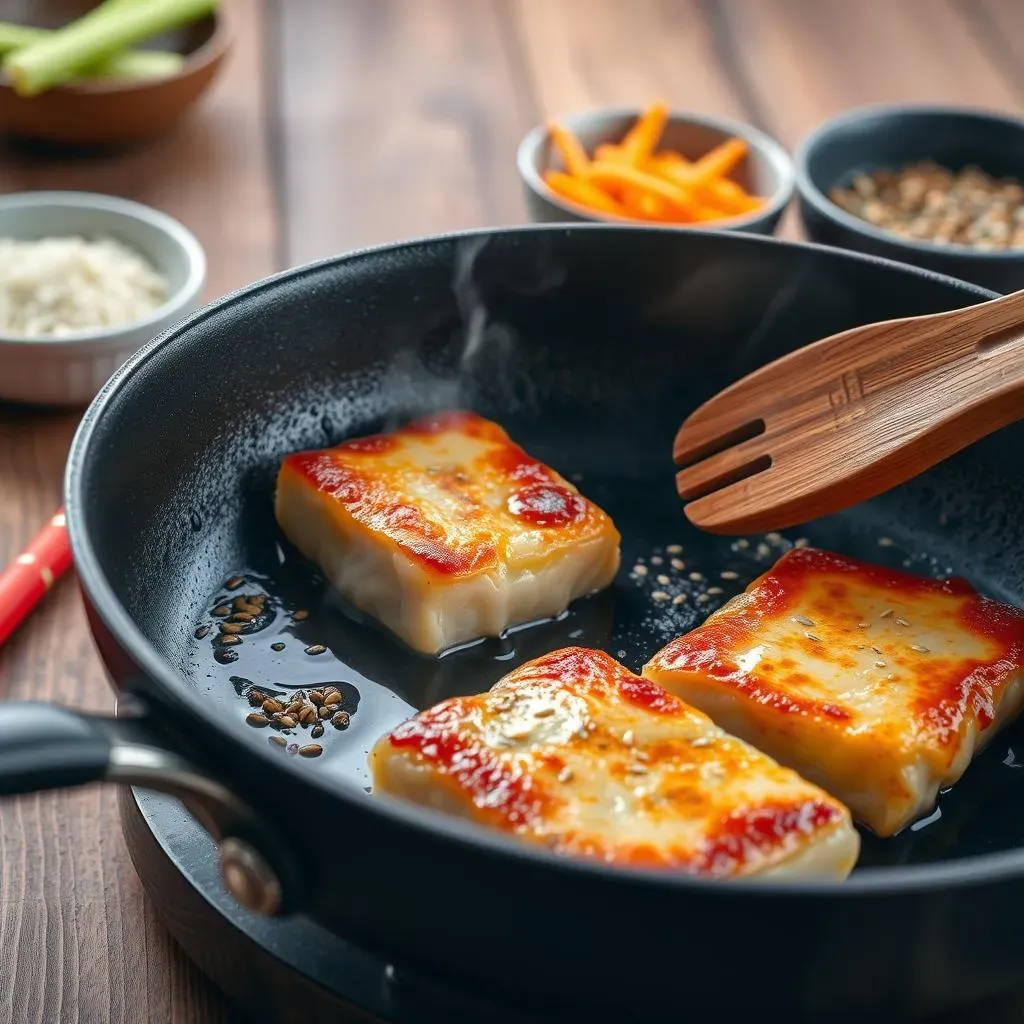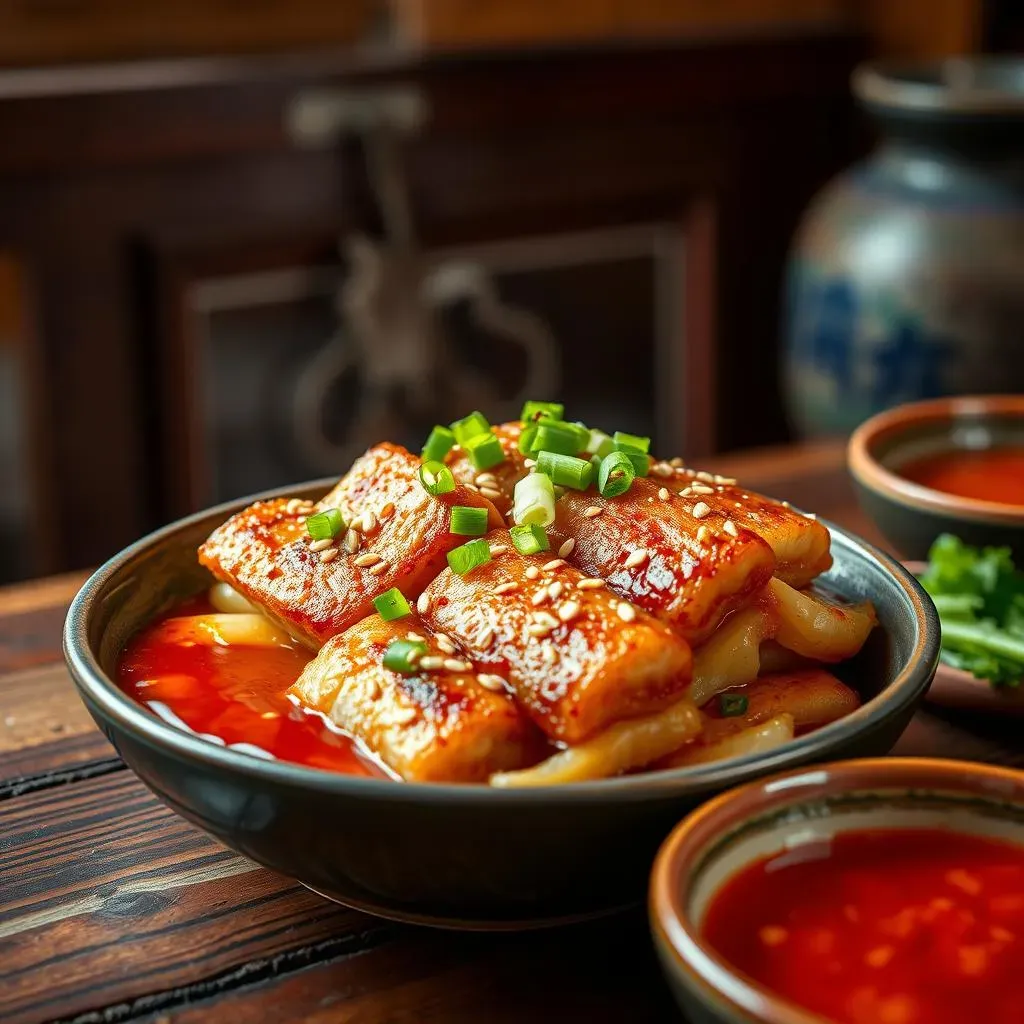Table of Contents
Ever wandered through the bustling streets of Seoul, the aroma of sizzling food tantalizing your senses? If you've experienced the vibrant Korean street food scene, you've likely encountered the irresistible allure of *eomuk*, the ubiquitous fish cake. This isn't your average fish cake; Korean fish cakes are a culinary marvel, boasting a unique texture and flavor profile that has captivated both locals and tourists for generations. This article dives into the world of *eomuk*, providing you with a comprehensive fish cake Korean street food recipe that you can easily recreate at home. We'll explore the fascinating history and cultural significance of this beloved snack, guiding you through a simple yet delicious recipe. Get ready to master the art of making authentic Korean fish cakes, discovering variations and creative ways to elevate your culinary skills. Whether you're a seasoned chef or a kitchen novice, this fish cake Korean street food recipe will empower you to bring a taste of Korea to your table. Prepare for a flavorful journey as we unravel the secrets behind this iconic street food! Let's embark on this culinary adventure together.
The Allure of Korean Fish Cakes: A Street Food Staple
The Allure of Korean Fish Cakes: A Street Food Staple
A Culinary Icon
Korean fish cakes, or *eomuk*, aren't just a snack; they're a cultural symbol. Think of them as the Korean equivalent of a perfect comfort food – warm, savory, and endlessly adaptable. You'll find them everywhere in Korea, from bustling street food stalls to upscale restaurants. Their popularity stems from their versatility; they're delicious on their own, in soups, stir-fries, or even as part of other dishes like tteokbokki. They're a true testament to Korean culinary creativity.
- Versatile: Used in various dishes
- Comforting: Warm and savory
- Cultural: Symbol of Korean cuisine
The Irresistible Appeal of Eomuk
What makes *eomuk* so special? It's the perfect blend of textures and flavors. The fish cakes themselves have a delightful chewiness, a satisfying resistance to the bite that's hard to resist. Then there's the broth—often a flavorful dashi infused with soy sauce, garlic, and other aromatics—that adds another layer of warmth and complexity. This is more than just a snack; it's an experience. Imagine yourself on a chilly evening in Seoul, sipping the warm broth from a steaming cup of *eomuk-guk* (fish cake soup), the savory aroma filling the air. You can find similar experiences in many places, like Los Angeles!
Texture | Flavor | Experience |
|---|---|---|
Chewy | Savory, umami | Warm, comforting |
Beyond the Bite: History and Tradition
The history of *eomuk* is rich and fascinating, reflecting Korea's culinary evolution and its influences from neighboring countries like Japan. While the exact origins are debated, it's clear that *eomuk* has been a mainstay of Korean cuisine for centuries. Today, it's not only a beloved street food but also a staple ingredient in many home kitchens and restaurants. Its adaptability and enduring appeal have cemented its place as a true culinary icon. Want to learn more about the history of Korean street food? Check out this article on Korean street food history!
Mastering the Fish Cake Recipe: A StepbyStep Guide
Mastering the Fish Cake Recipe: A StepbyStep Guide
Gathering Your Ingredients: A Culinary Checklist
Before we dive into the fun part, let's gather our ingredients. Think of this as assembling your culinary army, each ingredient playing a vital role in the final delicious outcome. You'll need fish cake (eomuk), of course – you can find various types at most Asian grocery stores or even online. Look for a firm, slightly chewy texture. Then, we'll need some aromatics: garlic, ginger, and scallions will add a delightful punch of flavor. Soy sauce and sugar will create a balance of sweet and savory notes, and sesame oil will add a nutty richness. Depending on the specific recipe, you might also include vegetables like onions, peppers, or mushrooms. Don't forget the broth! A flavorful dashi (fish stock) is traditional, but you can substitute chicken broth or even vegetable broth if needed. For a spicier kick, add some gochujang (Korean chili paste) or gochugaru (Korean chili flakes).
- Fish cake (eomuk)
- Garlic, ginger, scallions
- Soy sauce, sugar, sesame oil
- Optional vegetables (onions, peppers, mushrooms)
- Dashi (or chicken/vegetable broth)
- Gochujang or gochugaru (optional)
The Art of Preparation: A Step-by-Step Guide
Now for the fun part – the actual cooking! Start by preparing your fish cakes. You can either use them as is, or slice them into bite-sized pieces, depending on the recipe. Next, sauté your aromatics – garlic, ginger, and scallions – in a little sesame oil until fragrant. This awakens their flavors and creates a delicious base for your dish. Add your chosen vegetables (if using) and cook until slightly softened. Then, add the fish cakes and stir-fry until heated through. Now, it’s time for the magic. Pour in your broth, soy sauce, and sugar. Let it simmer gently, allowing the flavors to meld together beautifully. This is where patience pays off; the longer it simmers, the richer the flavors become. Finally, stir in a drizzle of sesame oil just before serving, for that extra touch of nutty aroma and richness. You can adjust the seasonings to your liking. Want to explore more Korean street food options? Check out our guide on common Korean street food!
Step | Action |
|---|---|
1 | Prepare fish cakes |
2 | Sauté aromatics |
3 | Add vegetables (optional) |
4 | Add fish cakes and stir-fry |
5 | Simmer with broth, soy sauce, and sugar |
6 | Finish with sesame oil |
Beyond the Basics: Exploring Variations and Creative Uses of Korean Fish Cakes
Beyond the Basics: Exploring Variations and Creative Uses of Korean Fish Cakes
Spicing Things Up: Flavor Adventures with Eomuk
Once you've mastered the basic fish cake recipe, the world of flavor possibilities opens up! Think of it as your culinary playground. You can easily adjust the spiciness by adding gochujang (Korean chili paste) or gochugaru (Korean chili flakes) for a fiery kick. Experiment with different broths—a rich, flavorful seaweed broth adds a unique umami depth, while a spicy kimchi broth brings a tangy heat. Don't be afraid to get creative with your additions! A handful of chopped kimchi, some sliced mushrooms, or even some shredded carrots can transform your fish cakes into a completely new dish. For inspiration, check out some other popular Korean street food dishes like tteokbokki, which often feature similar bold flavors.
Remember, cooking is all about experimentation and finding what you enjoy most. Don't be afraid to try new things and develop your own unique variations. You might discover your own signature fish cake creation that’ll become a family favorite. The beauty of *eomuk* lies in its adaptability, making it a blank canvas for your culinary creativity. Try adding some fish cakes to your next stir-fry for a tasty twist!
Spice Level | Broth Type | Additions |
|---|---|---|
Mild | Dashi | Scallions, garlic |
Medium | Kimchi broth | Kimchi, mushrooms |
Spicy | Gochujang broth | Gochugaru, onions |
Beyond the Bowl: Creative Culinary Applications
The versatility of Korean fish cakes extends far beyond simple soups and stir-fries. Think of *eomuk* as a secret ingredient waiting to be discovered in a range of dishes. Slice them thinly and add them to your favorite noodle soups for added texture and flavor. Try incorporating them into savory pancakes or fritters for a unique twist on traditional recipes. They can also be grilled or pan-fried until golden brown and crispy, making a fantastic appetizer or snack. Imagine serving them with a dipping sauce of your own creation – a sweet chili sauce, a creamy gochujang mayo, or even a simple soy sauce and sesame oil mixture. The possibilities are truly endless. Want to explore even more Korean street food options? Check out this article on the best Korean street food!
Consider using fish cakes in your next Korean BBQ spread – they're a great addition to the mix of meats and vegetables, adding a different texture and flavor profile. They can also be incorporated into rice bowls, sandwiches, or even salads for a creative and unexpected twist. The key is to let your imagination run wild and experiment with different combinations until you find your personal favorites. Don’t be afraid to try something new and unexpected; you might be surprised at what culinary delights you discover!
- Noodle soups
- Savory pancakes
- Grilled or pan-fried appetizers
- Korean BBQ
- Rice bowls and salads